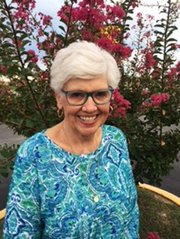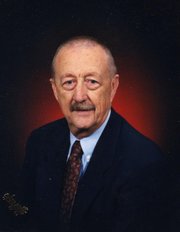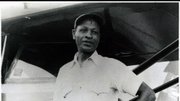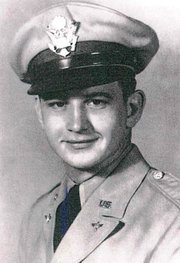Nearly 40 years ago, the Federal Aviation Administration invited Gwen Batie Blue to become a designated pilot examiner, an acknowledgment of her skill as a flier.
Designated pilot examiners are contracted by the federal agency to test the knowledge and practical expertise of fliers, beginning with their private pilot's licenses and ranging up to air transport pilot license. They also sign off on pilots for different ratings that would allow them, for example, to pilot multiengine aircraft or fly in poor weather relying on only instruments.
The 39-year-old Rogers mother of two went to Oklahoma City for training and met her classmates: 15 men. Not all of them were ready to accept a woman in their ranks, even in 1979.
"I don't think women should fly," one of them said.
Blue initially said nothing, but later she sought to break the ice, remarking: "If we got all the women in the air, look how safe the roads would be."
Her self-deprecation did the trick, lightening the mood.
Blue went on to become the first female designated flight examiner in Arkansas and amassed 15,000 hours in the air before she quit flying eight years ago.
On Nov. 8, 45 years to the day she earned her private pilot license, she will be one of four inductees into the Arkansas Aviation Hall of Fame. The ceremony will be in the Ron Robinson Theater, which is part of the Central Arkansas Library System's main campus at 100 River Market Ave. in Little Rock.
Her fellow hall of fame entrants are:
• Jerry Robinson, the first chairman and director of the Department of Aviation at Henderson State University in Arkadelphia. The school is the state's only four-year institution of higher education that offers degrees in aviation.
• The late Cornelius Robinson Coffey, a Newport native who was the first black person to establish an aeronautical school in the United States.
• The late Ernest Ambort, a Little Rock native who was a World War II fighter ace and flew with the Arkansas Air National Guard before seeing combat again in the Korean War.
This year's honorees will join 104 previous inductees, who include four women. The Arkansas Aviation Hall of Fame is an arm of the Arkansas Aviation Historical Society. The society's board selects the candidates for induction based on the significance of their contributions to aviation.
"It's an excellent class," said Dick Holbert, who runs Central Flying Service in Little Rock and helped found the society. "Look at all of the inductees. All are excellent choices, I think."
Proceeds from the ceremony are used to fund scholarships for aviation students at Henderson State University and Ozarka College in Melbourne.
Blue, now 71, said that while growing up in Rogers she had no aspirations other than becoming a wife and a mother. She had a infant son when her husband decided to learn to fly. Blue said she didn't want to stay at home while her husband was up in the air. Her husband's instructor thought a good solution would be for Blue to take a spin in a small aircraft.
She did, and she was hooked. She got her private pilot's license in 1973. By 1979, she had a commercial private pilot's license, which allowed her to teach others how to fly. That eventually led to her buying a small aircraft and opening a flight school at what is now Rogers Executive Airport Carter Field.
The flight school, called Gwen Batie Flight School, had an FAA Part 61 certificate. Part 61 flight schools are less structured than Part 141 flight schools. The former allow people to work at their own pace, though students in both schools must meet the same requirements for pilot training and certification.
A Part 61 flight school allowed Blue to set her own hours, which she said "made it a good business" for her.
"It was a neat job for a mom to have," Blue said. "I could take off and go to kids' stuff."
The school also allowed her to essentially fly for free. The students sitting in the left seat of her aircraft would pay for the aircraft any time it was in the air. Blue sat in the right seat as the instructor.
Blue said she was thrilled when the FAA asked her to become a flight examiner.
"I made a lot more money as an examiner than I did as a flight instructor," she said.
She eventually was qualified as a flight examiner on twin-engine aircraft weighing less than 12,500 pounds. About all she lacked was a rating to fly jets. She held an air transportation pilot license, which would have allowed her to fly for airlines.
The air transport license "is my doctorate in aviation," Blue said. "But I didn't want to [fly for the airlines]. I wanted to be home at night with my kids."
Take Off, a book that looks back at some of the "aviation anecdotes" of her career, is scheduled to be published early next year.
Blue remains in rare company. The FAA has 11 designated flight examiners with Arkansas addresses, according to an agency spokesman. None are female, he said.
JERRY ROBINSON
Robinson had a varied career in aviation before he turned to flying a desk. He had stints as a missionary pilot in Brazil; an instructor for Flight Safety, an advanced flight training company that provided training for business and regional jet manufacturers; and a demonstration pilot for the Cessna Aircraft Co., now known as Textron.
He also was a pilot in the U.S. Army, flying planes and helicopters. He rose to the rank of colonel in the Army Reserve before retiring and moving to Arkadelphia to head Henderson's Department of Aviation in 1987.
At the beginning of Robinson's tenure at the school, it had 50 aviation students. Five years later, there were 168, increased in part by Robinson rewriting the department's curriculum, and creating an aviation management track to go along with the professional pilot track, earning the department a designation as an FAA Airway Science Program.
He also oversaw the construction of a 33,000-square-foot Caplinger Airway Science Center, housing the department's flight simulators and cockpit procedure trainers, classrooms, lecture hall, and faculty and staff offices. Robinson retired in 2005.
CORNELIUS ROBINSON COFFEY
Coffey was born in Newport on Sept. 6, 1903, the same year of the Wright Brothers' first powered flight. His parents were Henry and Ida Wright Coffey. At 13, he rode in an aircraft for the first time and knew aviation was his calling, according to the aviation society.
He studied to be an auto mechanic and, with the help of a friend, built his own aircraft -- powered by a motorcycle engine, according to the Chicago Tribune. He taught himself to fly because commercial flying schools wouldn't accept black applicants.
He also obtained an aviation mechanics license before opening his own aeronautical school in 1938 at the former Harlem Field in Chicago. Among the estimated 1,000 students that went through the school by the time World War II ended in 1945 were several Tuskegee Airmen, the black Army Air Corps pilots who flew fighter missions over Europe.
Coffey, who also designed a carburetor heater to prevent engine icing and allow aircraft to fly in all types of weather, was the first black man to have an aerial navigation intersection named after him by the FAA. The COFEY Fix -- the fixes were limited to five letters -- was a way-point on the VICTOR 7 airway over Lake Calumet to provide electronic course guidance to Chicago Midway Airport Runway 31-L.
Coffey died in 1994 in Chicago at the age of 90.
ERNEST AMBORT
Ambort was born on Nov. 7, 1922, in Little Rock. He enrolled in the Aviation Cadet Program of the U.S. Army Air Corps on Sept. 17, 1942. He was commissioned as a second lieutenant and received his pilot wings on Jan. 7, 1944, at Williams Field in Arizona.
After completing training in the P-38 Lightning, a twin-engine fighter, he was assigned to the the 9th Fighter Squadron of the 49th Fighter Group in the Dutch East Indies. He was credited with destroying five enemy aircraft in aerial combat and damaging another before returning home in September 1945. His achievement earned him a Distinguished Flying Cross.
He left active duty in March 1946 and served with the 154th Fighter Squadron of the Arkansas Air National Guard before he was re-activated during the Korean War.
He flew with the 6147th Tactical Control Group, which developed the concept of airborne forward air controllers. They flew small aircraft over enemy positions to identify targets and direct fighter bombers to attack them. Ambort left active duty at the end of the war.
Ambort died in 1981. He is buried at Little Rock National Cemetery.
Metro on 10/15/2018




